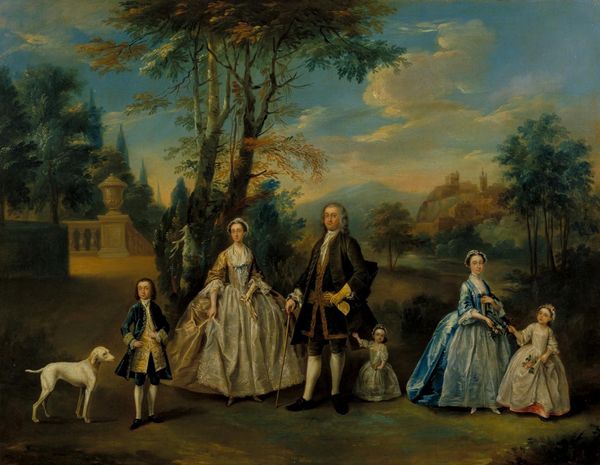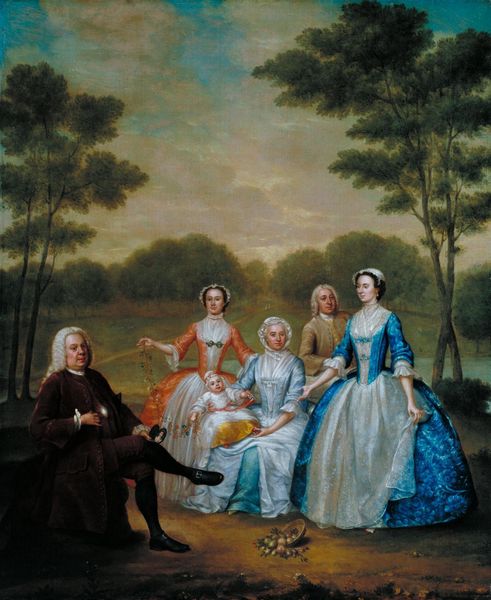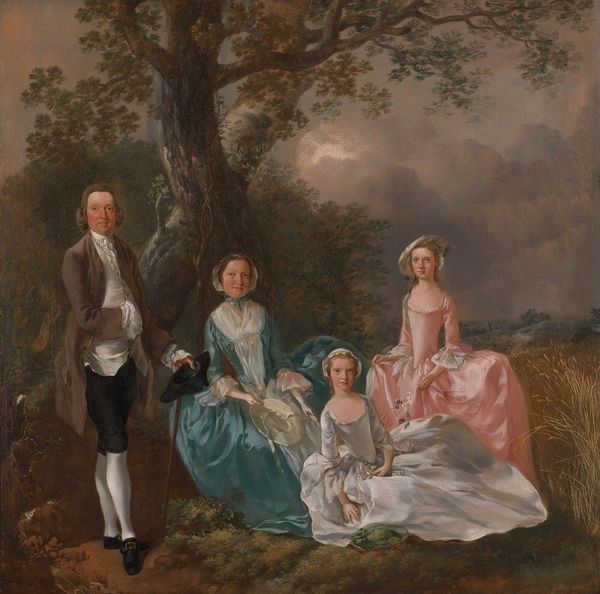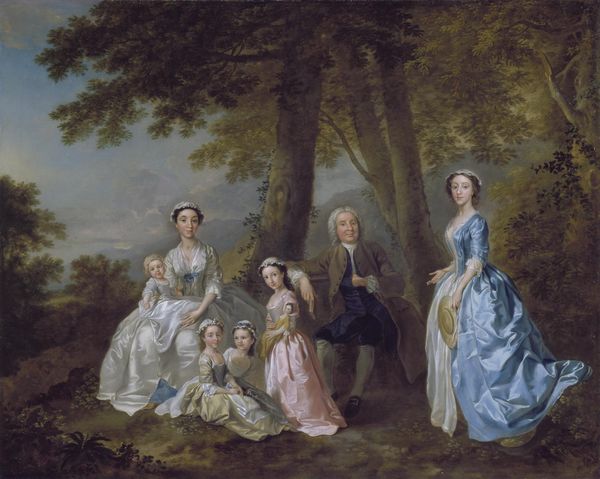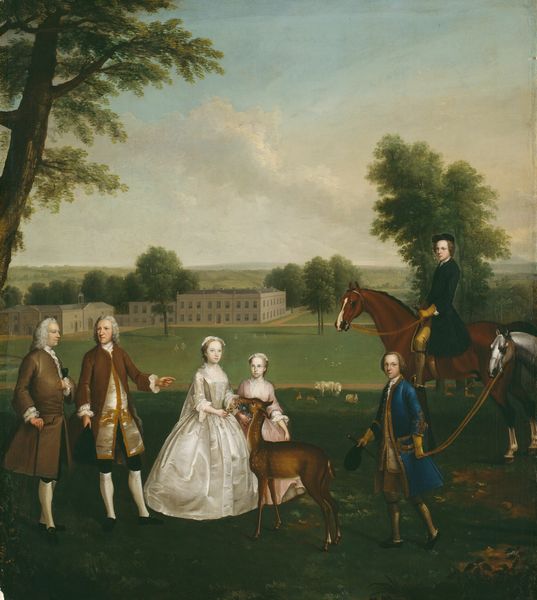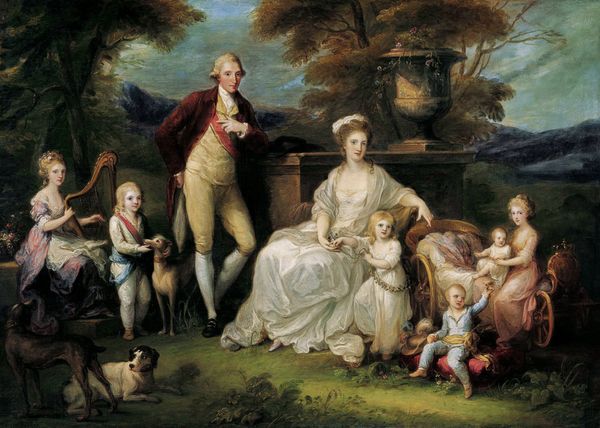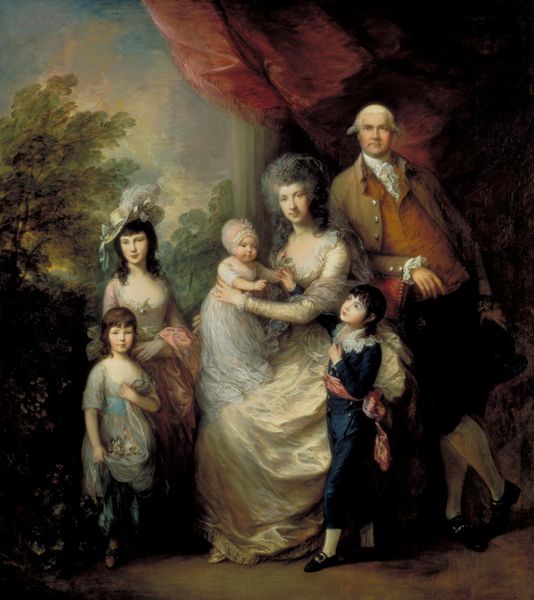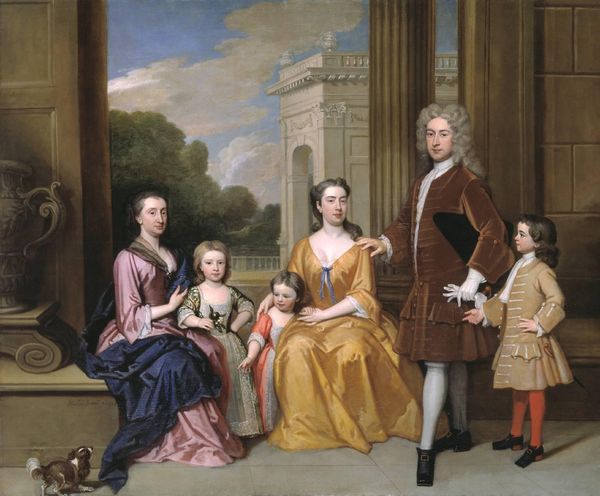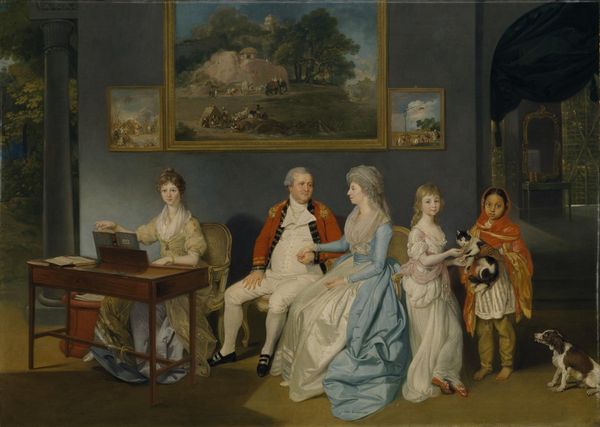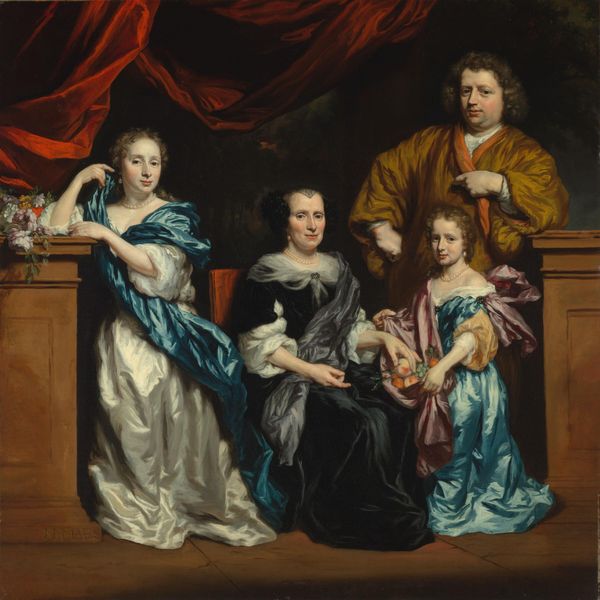
Dimensions: support: 984 x 1245 mm frame: 1215 x 1465 x 92 mm
Copyright: CC-BY-NC-ND 4.0 DEED, Photo: Tate
Editor: Here we have Arthur Devis's "The James Family," undated, located at the Tate. It’s an oil on canvas, and I'm immediately struck by how posed and formal everyone appears. What can you tell me about it? Curator: It’s fascinating to consider how portraiture like this solidified social hierarchies. Devis's work offers a glimpse into the rigid structures of 18th-century British gentry, doesn't it? What do you think it communicates about gender and power? Editor: I guess the clothing and setting speak to wealth, but the daughters seem almost doll-like, and the women are very still. Do you think that's intentional? Curator: Absolutely. The controlled environment, the stiff poses, it all reinforces the idea of social control. Consider how women's identities were often bound by expectations of decorum and domesticity. This image normalizes that. Editor: That makes me see the painting in a whole new light! Curator: Right! Recognizing these layers allows us to challenge the narratives these images originally promoted and connect them to ongoing conversations about representation and identity.
Comments
Join the conversation
Join millions of artists and users on Artera today and experience the ultimate creative platform.
tate 8 months ago
⋮
This group portrait shows Robert James, together with his wife Mary and two daughters Elizabeth and Ann. James, aged fifty-one at this time, was for many years Secretary to the East India Company. Devis specialized in painting fashionable small-scale portrait groups or 'conversation pieces’ set in domestic interiors or spacious parkland. Although such pictures were intended to portray family groups in a private setting, they can often appear quite formal, and in Devis’s case, even stiff. However, for a man such as James, a display of material wealth and worldly success was perhaps more meaningful than family intimacy. Gallery label, May 2007
